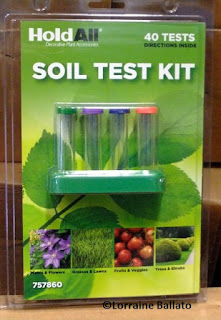PREPARING YOUR HYDRANGEAS FOR WINTER
It's time to start
preparing your hydrangeas for winter. With autumn's official start right around
the corner on September 22, it' a good time to start to get your plants ready
for winter while the weather is still pleasant and mild.
You need to do a soil test to check the pH of the soil. You'll need to add aluminum sulfate to change the flower color to blue (make the soil more acidic) or lime to change the flower color to pink (make the soil more alkaline). You can buy a pH soil test kit at your favorite garden center or box store like Home Depot or Lowe's.
Don't guess: do the test so you get it right. Remember that the soil will always try to revert to its natural state so once you start this amending process, you will have to do it each autumn to maintain your desired flower color.
A second fall activity that will help you grow a healthier hydrangea is to take care of any plant that has had leaf spot issues this season. Take a moment or two and inspect all your hydrangeas. If any of them have suffered this past season from leaf spot diseases as you see in this photo,
you can go a long way to preventing them next year with a good clean up starting now.
W hile you're at it, you might think it's a good
idea to remove your spent flowers. DON'T
DO THAT! Those ratty looking flowers will protect the flower buds that will
develop over the next few months. Those flower buds have to survive the winter
and need all the help they can get. Since you have nothing to gain by
deadheading the plant now, try to live with the cosmetic flaw. Remember that cutting
the plant now will stimulate it which you don't want to do. You want the plant
to settle down, get ready for its winter rest and send its strength to the
roots. So don't mess up its brains by cutting it.
First thing to think about
is what you might need to do for your bigleaf hydrangea. A big item for many
people is changing the color of your flower to pink or blue. If that is you, be
sure your plant is one that is pH sensitive and can indeed change its flower
color. If so, autumn is the time to add the proper amendment so the plant can
absorb it in time for next year.
You need to do a soil test to check the pH of the soil. You'll need to add aluminum sulfate to change the flower color to blue (make the soil more acidic) or lime to change the flower color to pink (make the soil more alkaline). You can buy a pH soil test kit at your favorite garden center or box store like Home Depot or Lowe's.
Don't guess: do the test so you get it right. Remember that the soil will always try to revert to its natural state so once you start this amending process, you will have to do it each autumn to maintain your desired flower color.
A second fall activity that will help you grow a healthier hydrangea is to take care of any plant that has had leaf spot issues this season. Take a moment or two and inspect all your hydrangeas. If any of them have suffered this past season from leaf spot diseases as you see in this photo,
you can go a long way to preventing them next year with a good clean up starting now.
With gloved hands, clip
off/manually remove any leaves that are spotted and diseased and put them in
the trash. Don't give those leaves a chance to drop to the ground and allow the
fungal spores or bacteria to get into the soil or mulch around your plants. If
any of those diseased leaves have already fallen to the ground, remove them
ASAP. Be aware that the pathogens that cause those leaf spot issues are not
killed off by winter and will reinfect your plant next year. A little bit of
sanitation now will pay big dividends next season.
Make sure you disinfect your
clippers with your favorite disinfectant. I like a spray of Lysol or a
disinfecting wipe. You don't want to spread anything to any other plant. Ditto
for your gloves/bare hands.
If you want to know more
about hydrangea leaf spot issues, there's a terrific academic paper from
Tennessee State University Extension that can be accessed from this link: https://tinyurl.com/ybs4ap5o. Although
the authors discuss treating the conditions with multiple products, most of
them aren't available to home gardeners and are not organic (my preferred
approach) with the exception of copper and Neem oil. You may want to lay in a
supply of either of those two treatments at the end of the season when garden
centers put things on sale. They are good all-around organic treatments for
many fungal issues in the home garden.
I'll write more about
winter prep as the season progresses. For now, just enjoy the shorter days and
blessedly cooler temperatures.
Here's to happy hydrangeas and happy gardeners!






